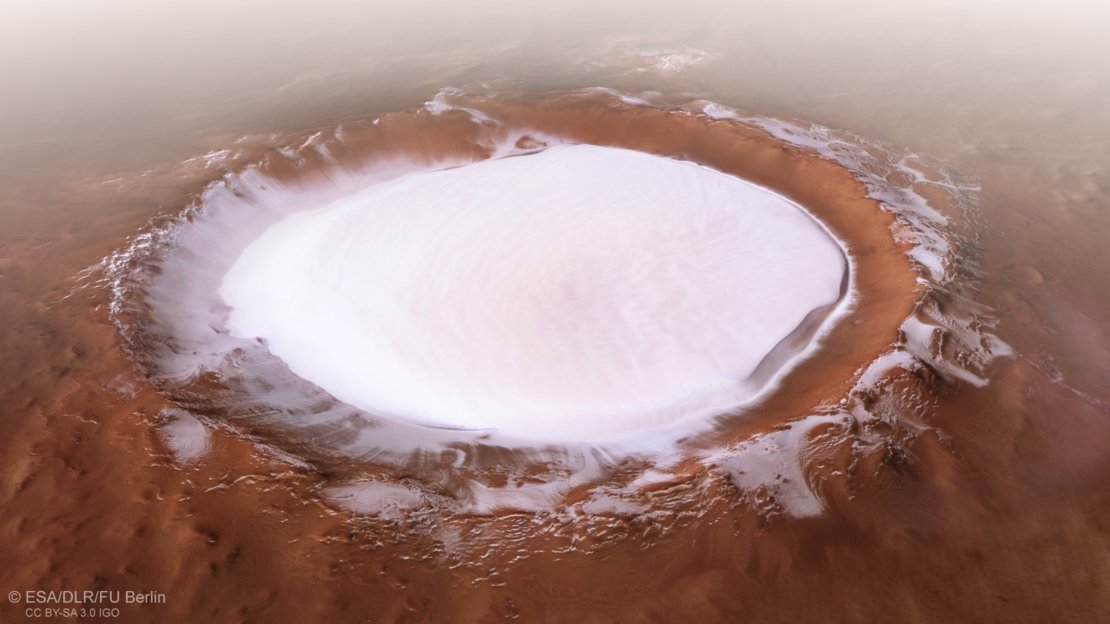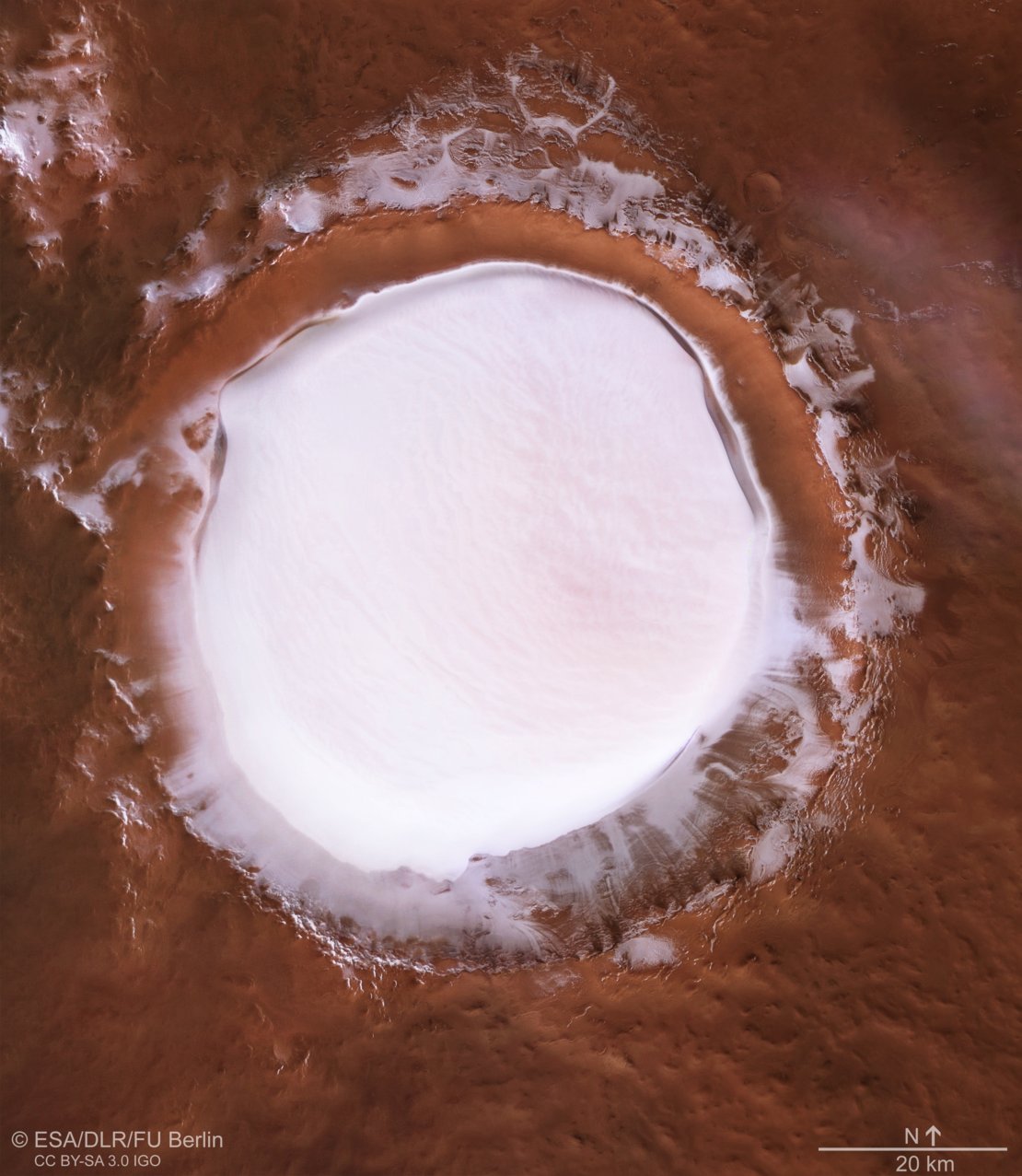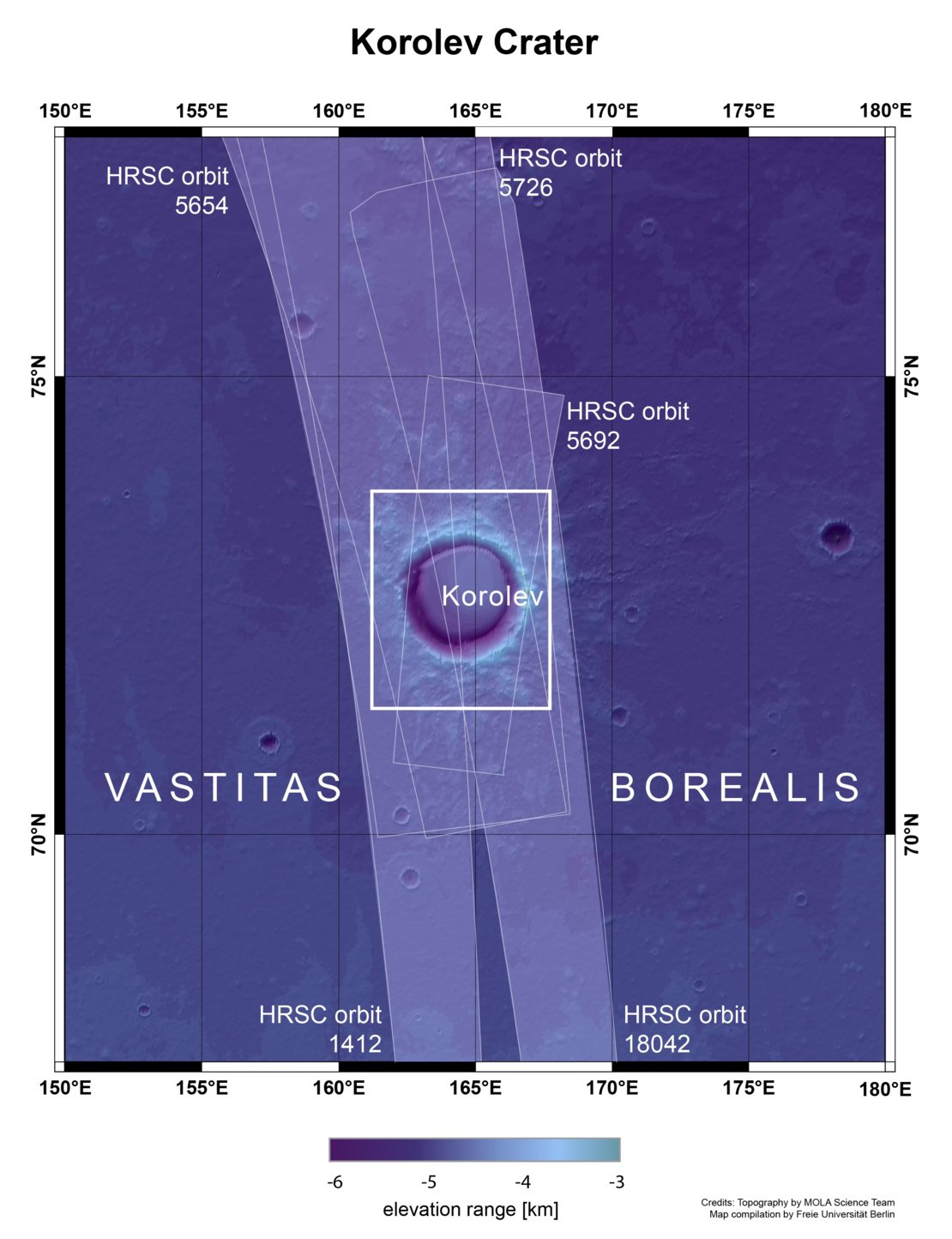This Icy Crater Near Mars' North Pole Is a Winter Wonderland (Photos)

Images of an "ever-icy" Martian crater reveal a distant yet mesmerizing winter wonderland.
What appears to be a bowl of fresh snow in this imagery released by the European Space Agency (ESA) on Thursday (Dec. 20) is actually an ice deposit chilling the air moving over it, agency officials said in a statement.
Ice is found in the deepest parts of this formation, called Korolev Crater, and as air moves over the ice, it cools down and sinks, producing cold air right above the chilly deposit.
ESA officials called this phenomenon a "cold trap" because the air acts as a shield to keep the crater "permanently icy."
Korolev Crater is 82 kilometers across (51 miles) and found just south of terrain that wraps around Olympia Undae, Mars' northern polar cap. The crater floor can reach depths of two kilometers (1.2 miles) below its rim, deeper than Earth's Grand Canyon.
The High Resolution Stereo Camera on the space agency's Mars Express satellite captured five different "strips" of the crater, each one coming from a different orbit of the spacecraft. By combining them, a single image was produced.
Mars Express has a connection with Christmas — the mission first fired its main engine to enter into Martian orbit on Dec. 25, 2003, after a roughly six-month journey from Earth. Mars Express is the agency's first spacecraft to explore another planet, but its high-resolution stereoscopic camera and mineralogical mapping spectrometer originated with an earlier mission called Mars 96, which failed shortly after launch on Nov. 16, 1996.
Breaking space news, the latest updates on rocket launches, skywatching events and more!
Follow Doris Elin Salazar on Twitter@salazar_elin. Follow us @Spacedotcom, Facebook and Google+. Original article on Space.com.

Doris is a science journalist and Space.com contributor. She received a B.A. in Sociology and Communications at Fordham University in New York City. Her first work was published in collaboration with London Mining Network, where her love of science writing was born. Her passion for astronomy started as a kid when she helped her sister build a model solar system in the Bronx. She got her first shot at astronomy writing as a Space.com editorial intern and continues to write about all things cosmic for the website. Doris has also written about microscopic plant life for Scientific American’s website and about whale calls for their print magazine. She has also written about ancient humans for Inverse, with stories ranging from how to recreate Pompeii’s cuisine to how to map the Polynesian expansion through genomics. She currently shares her home with two rabbits. Follow her on twitter at @salazar_elin.


